A user will rarely need to set their own calibration standard, normally using the lengths automatically calculated by em. However, understanding calibration standards can help you simulate your circuit in the most efficient way while ensuring the accuracy of your response data.
In order to de-embed a port discontinuity, Sonnet must electromagnetically analyze several calibration standards which include the same port discontinuity as is in the primary circuit. For example, to de-embed port 2 in the circuit below, the calibration standards contain a transmission line with the same line width as the primary circuit.
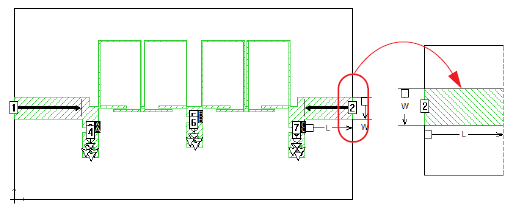
For box-wall ports, Sonnet uses the Short Open Calibration (SOC) technique which means a short and open standard must be analyzed. For orthogonal ports (ports which are connected to transmission lines which are perpendicular to a Sonnet box-wall), the two calibration standards look like the picture below, where the dashed line is replaced with an electric wall (for the short circuit) and a magnetic wall (for the open circuit).
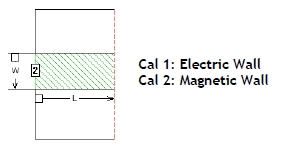
For box-wall ports, any object that touches the same wall as the port will be included in the calibration standard. This rule applies to vias, dielectric bricks, and metal on other levels as shown in the example below. This metal is included in the calibration standard.
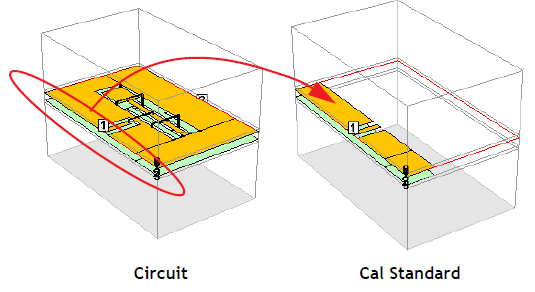
For diagonal ports, Sonnet uses the single three-port calibration standard shown below, where the short and open data are generated by a single analysis, and by short-circuiting and open-circuiting port 3.
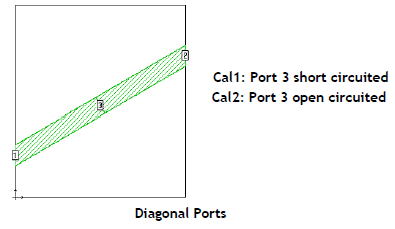
Shown below are some examples of the calibration standards used for various port types. The calibration length for the boxwall ports is “L” and for all other ports the calibration length is the same length as the reference plane.
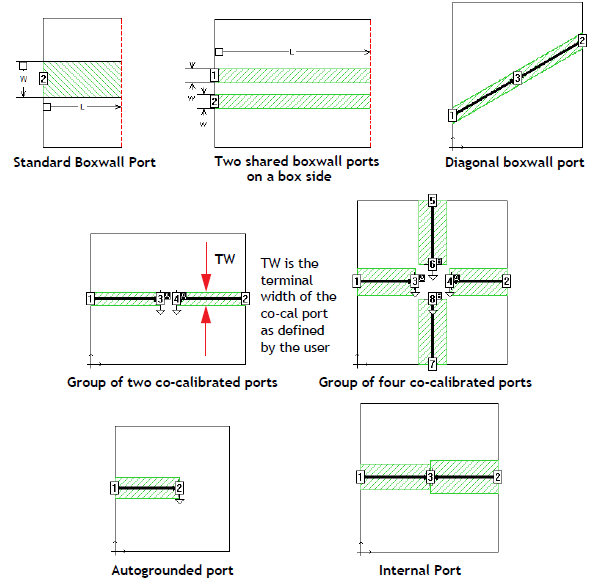
For any of the pictures above which show a reference plane, em first analyzes the structure without the reference planes, then simulates additional standards (not shown) to remove the port discontinuity and shift the reference plane, just as it would if this were your primary structure. For example, in the two-port co-calibrated port example above, Sonnet first analyzes the structure shown in the picture, and then analyzes the boxwall port calibration standards in order to de-embed up to the co-calibrated ports.